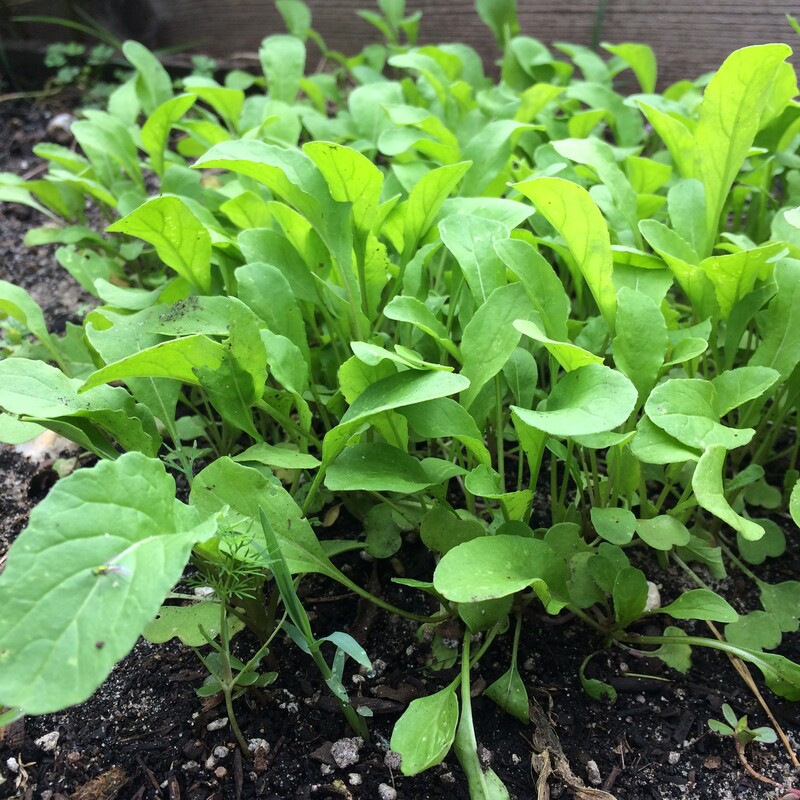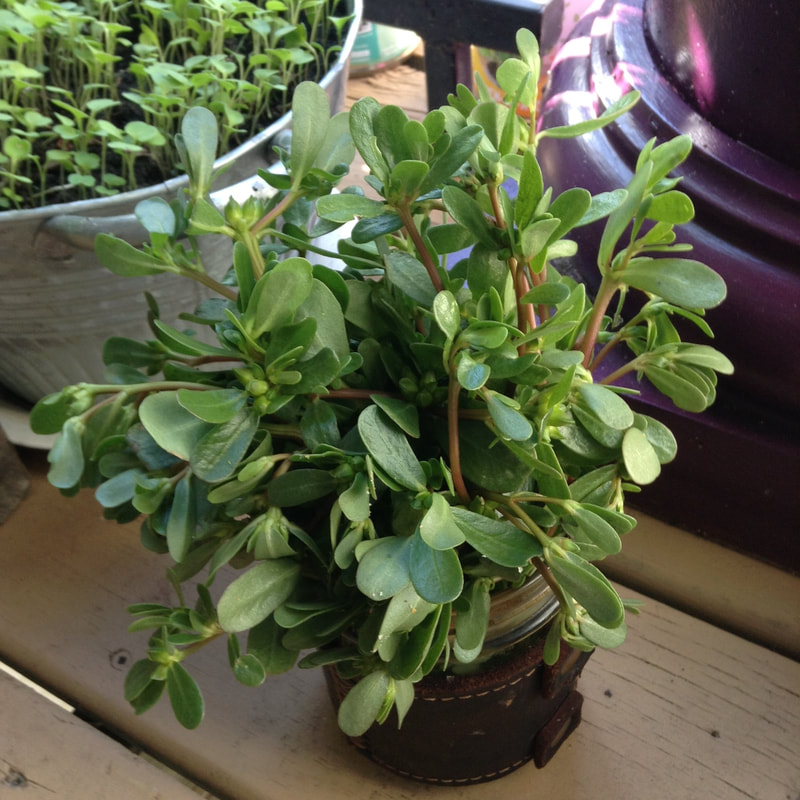|
Story and photos by Donna Iverson
"Arugula persists in quiet superiority as the best tasting, most versatile and easiest to prepare salad green," writes Amanda Moll in the Atlantic magazine. I would have to agree with her. I have been growing arugula for a number of years and enjoying it's tangy, peppery flavor in salads. And I always find myself nibbling on its tender leaves whenever tending the garden bed. Recently, I read it's good on pizza, and may try that very soon. Although slightly bitter, it is high in nutrients like other wild salad greens including: endive, escarole, purslane, watercress, radicchio, mustard greens and Swiss chard. In fact, the more bitter a lettuce green, the more nutrients it has. These nutrients include something called phytonutrients,as well as Vitamin A, Vitamin C, beta-carotene, calcium, and folate. My first introduction to arugula was in a fancy restaurant, where it was served with a sweet dressing on a very expensive small plate. A few years ago, arugula seeds were not easy to find, but today they are sold in most seed catalogs and a few grocery stores. A native of the Mediterranean, arugula is popular with Europeans, especially the Italians. And it is getting more and more popular in this country as gardeners find it easy to grow and enjoy it as a flavorful addition to salads or as a salad in its own right, Like most lettuces, it prefers cooler temperatures, so plant it in the early spring and then again in early fall. The leaves can be harvested on a regular basis, although as they grow larger, they become too bitter for your tastes. Once the plant flowers, it is time to let it go to seed and let the pollinators enjoy it for the rest of the summer. Or pull it out, until the next planting season. As for preparing it for eating, it is definitely easy ..just wash the leaves and add your favorite dressing. No "massaging" it like you have to do to kale to make it edible. And It doesn't get limp or soggy I see the heaviest dressing. A member of the mustard family, your fall-planted arugula will survive a light frost. You will have edible leaves in about 6 weeks and the fall crop will be the most flavorful. While arugula may be a "nontraditional green," you may find it a favorite both in your garden and on your plate.
0 Comments
Your comment will be posted after it is approved.
Leave a Reply. |
Archives
April 2024
Categories |


 RSS Feed
RSS Feed